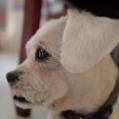M240 and ND filter users?
-
Recently Browsing 0 members
- No registered users viewing this page.
-
Similar Content
-
- 1 reply
- 79 views
-
- 22 replies
- 1,296 views
-
- 2 replies
- 281 views
-
- 4 replies
- 406 views
-
- 14 replies
- 780 views
-






Recommended Posts
Join the conversation
You can post now and register later. If you have an account, sign in now to post with your account.
Note: Your post will require moderator approval before it will be visible.